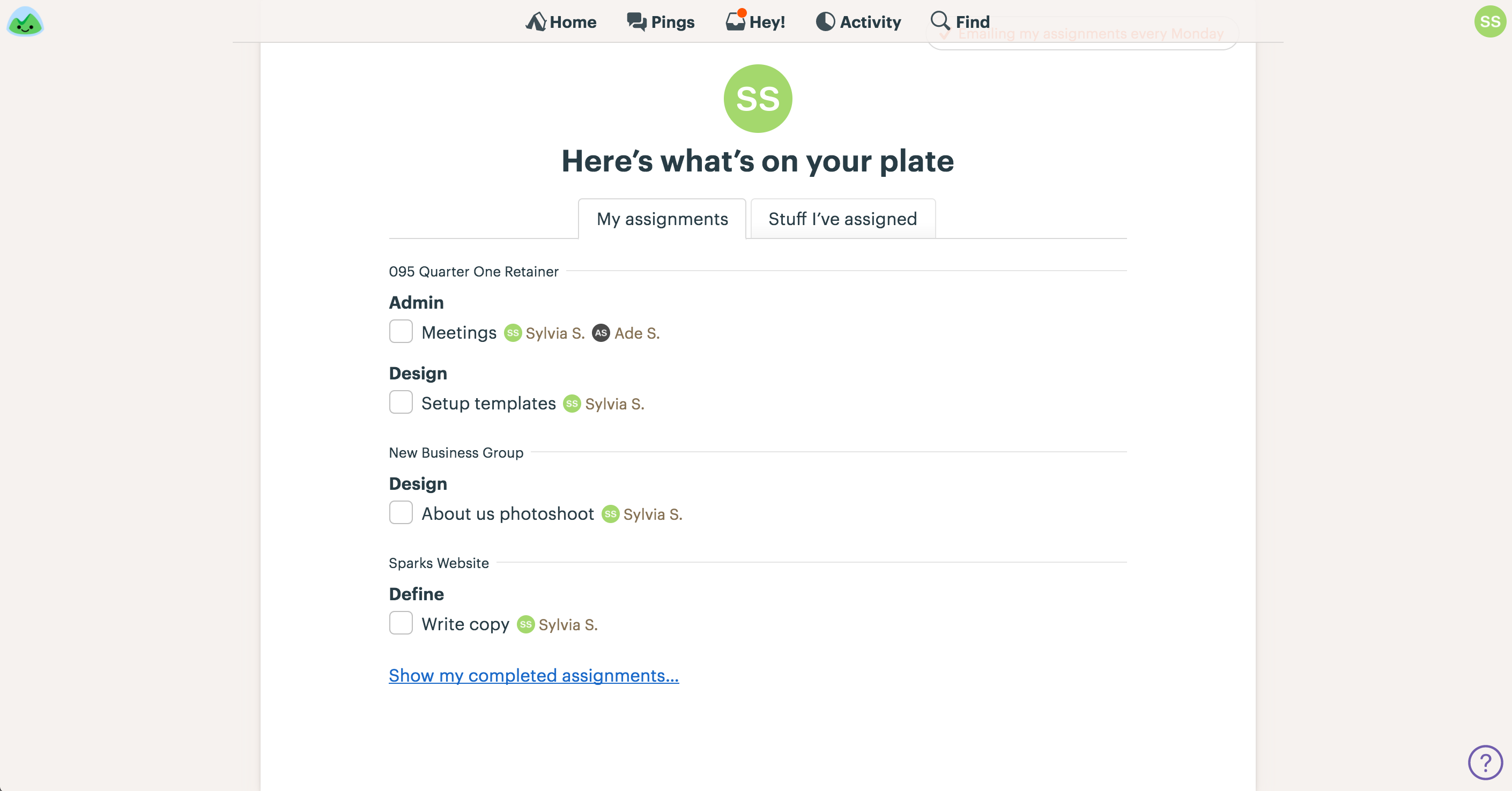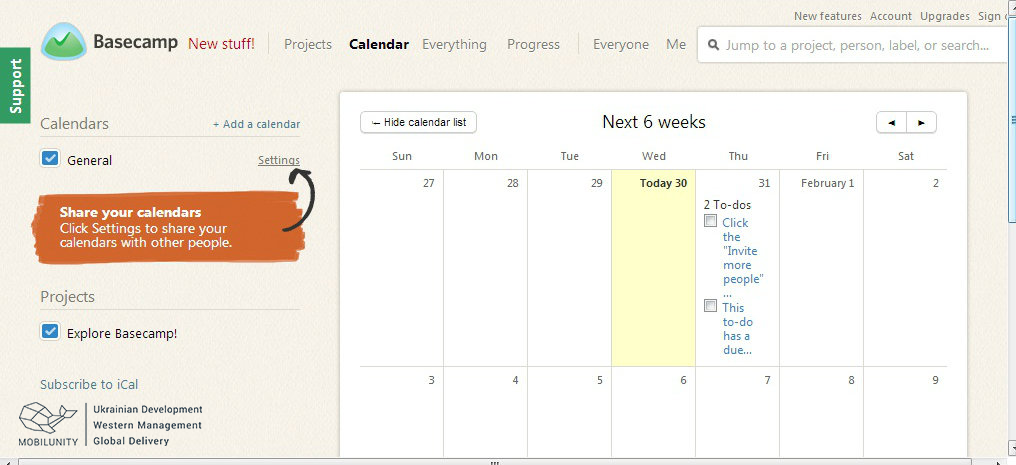
Basecamp 3 calendar software#
We actually ended up splitting out several of the tabs in there into their own sheets, so we could connect directly, which is especially helpful when our software clients have access to the whole project because they're contributing in some way. So, to give you an example of how this works, we have Google Sheet dashboards set up for each of our service lines (inbound marketing, website design, and sales enablement), housing certain information that doesn't fit anywhere else.īut instead of opening up Google Sheets to get into them, we LINK them to Basecamp 3, and go through there. Today, EVERYTHING starts in Basecamp, even our Google docs, because they're all linked. This was a game-changer for us, because in the past, there was a confusing balance of what to go to Basecamp for, and what to go to Google Drive for. In the 3rd installment of the Basecamp series, they meet this HEAD on.ġ) There is now a section titled "Docs & Files"Ģ) You can create folders and sub-foldersģ) You can link Google Docs and slides and sheets, and even FOLDERS You can't organize your files or folders, and everything you attach to a message or to-do gets added to the never-ending stream of document-consciousness. In Basecamp 2, document management is a bit of a joke. This has since been rectified, and the client-facing stuff is JUST as good, if not better, than I remember in Basecamp 2. They still had a "client mode," which meant they could SEE what you wanted them to see, but they were left out of the assignments. That's actually a thing they thought would be good to leave out apparently.

UPDATED: Initially, this was the most difficult change to navigate through, because in Basecamp 3, you didn't have the ability to assign to-dos to clients. We were wasting time digging through emails, etc.Succession planning was very challenging.Communication was scattered - there were way too many places to connect with each other, and people were missing tasks and deadlines.Before the change to Basecamp 3, everything flowed together beautifully, but there were a few things that bothered me: Our project management execution needs to be ON-point if we're to hit our deadlines and make effective decisions about the future of our projects. But a few of these are specific to our industry: Hubspot, and SEMrush. Basecamp Classic (2): Project management, some project storage, & discussions with your team.Prior to the change, this was what ours looked like: When you roll out Basecamp 3 coming from the Basecamp 2 environment, prepare to make significant shifts in the rest of your tool stack. I don't run my projects, my project leads do, but I am involved creatively and have ultimate oversight to it all. Ultimately saves me time, money, or both.However, I don't have time to get lost in options. I need to be able to do simple things like change access limits, and work within the environment created. Backwards AND frontwards facing - Reviewing something' history is just as important as planning the future.I need something that is great at what it does, and does a LOT. Strongly multi-functional - No one-off's.And since adoption is key, I don't need something that confuses my teams.


Basecamp Classic isn't part of this review, but it DOES still exist. shame on me, being a marketer on Windows. I am an android/Windows guy, so this review is based on working with those devices.

Here's a side-by-side comparison of Basecamp 2 vs Basecamp 3. But there were some issues with our delivery process that were gnawing at me.Īnd I felt that Basecamp 2 was where some of the bottlenecks existed. We were already using Basecamp 2, and had a great tool stack that made us nimble and effective. I was toying with the idea of "upgrading to Basecamp 3 for quite awhile.


 0 kommentar(er)
0 kommentar(er)
